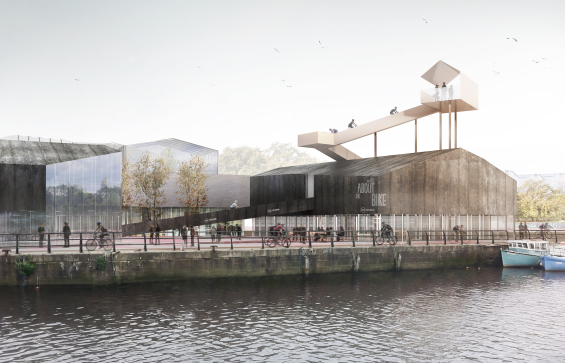Ten years after AWP was shortlisted for the final stage of the Architecture Foundation new building in London, Igloo-Carillon plc has selected the office for territorial reconfiguration* to deliver a design vision for a cycle hub building in Malmo Quay, Lower Ouseburn Valley, Newcastle upon-Tyne.
The Ascent of Malmo Quay, Ouseburn Valley: reinventing Newcastle landscape
Revealing the unique and impressive landscape of the Tyne and the Ouseburn, a lightweight polished reflective steel ramp ascends the architecture of the cycle hub to an observatory offering a cinematic and panoramic view experienced either by foot or bike. The experience is enriched by unexpected and sensuous combinations of materials, such as matt tarp and mirror-polished stainless steel. The naval heritage of the Valley is recalled in the boathouse-like design of the three buildings.
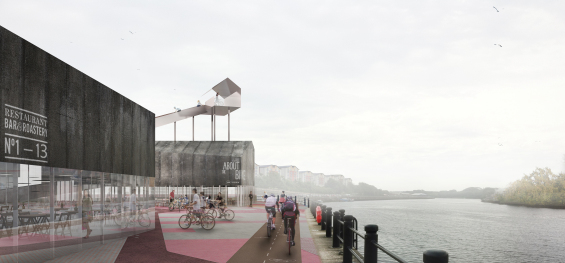
CONCEPT : The Invention of Landscape Malmo Quay, at the end of the Ouseburn Valley, is located at the intersection of Newcastle’s regional cycle routes. Our design for this site is a microcosm of the ascent of Mont Ventoux, one of the most impressive stages in Tour de France. The road to the top is made of different strata and environments: beginning gently, the route becomes a test entering the protection of the forest-like shed, the relief when reaching the first platform to admire the view, an increased exposure to the elements with the continued ascent, finally arriving at the summit to discover the most impressive view of the cityscape. Indeed, Mont Ventoux is also referred to as the originating place for the idea of “landscape” in thedescription of it by the Italian poet Petrarch in the 14th century. In our project, the reflective, polished steel ramp and observatory platform reveals the existing landscape by creating framed views of the Tyne and a unique experience of Ouseburn.
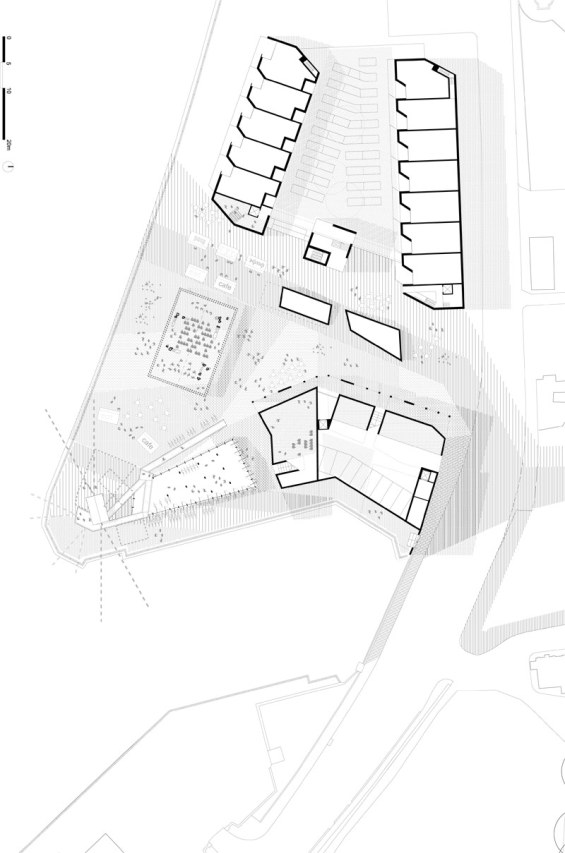
CONTEXT : The Ouseburn Landmark
An obvious response would be to create a building in the shape of an iconic object that obstructs the existing character of the Valley. On the contrary, our design for the entire site at Malmo Quay aims to practice and contribute to the essence of the site, enhancing the unique historical heritage, its identity and its naval nature. Our proposal continues an affinity with the existing landscapes and views of Newcastle’s landmarks (The Sage Concert Hall,The Wilkinson Eyre bridge, the Toffee Factory, Cluny warehouse, Byker estate, Baltic Centre etc.). By revealing a new perspective of the city and the Valley, the cycle hub will become a landmark celebrated precisely for the view it creates. V isitors will not only remember the architectural experience and ascent of the ramp (by foot or on bike): the true landmark will become the memory and the photograph taken from the top.
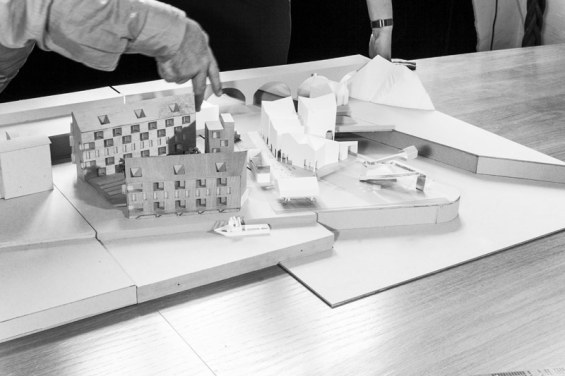
CONSTRUCTION : Positive Low Tech design
Our approach proposes a compact, economically rational massing. The construction of the three buildings is identical and simple: steel posts fixed on a concrete base supporting a metal framework. Wide glass windows alternated with polycarbonate pivoting panels. The luminous transparency on the ground floor allows the perception of continuity with public space and the quay: architecture integrated with the river landscape. T his flexible and low tech design is positive since the buildings have an inherently adaptive character and evolve with future requirements. The public buildings are reminiscent of boathouses, enveloped in dark tarp. The cycle hub is partially disrupted by the lightweight polished steel reflective ramp, getting lighter with the ascent, glittering as a lighthouse or disappearing into the sky, depending on the climate. In contrast, the housing has a continuous facade of white bricks, surmounted by glazed winter gardens which enable residents to enjoy the location in all weathers. Although the 3 buildings have a similar implementation, each of them retains their own diverse personality. The interiors are light, convivial, generous in volume and flexible.
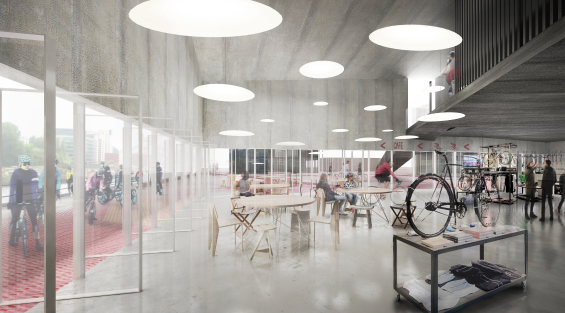
USES : Flexibility and Community
The heritage and community spirit of Ouseburn Valley – its industrial past, identity and the values of re-use – are central to our design. T he typologies of spaces are unstandardised and flexible, with the possibility of adapting each programme. The cafe and cycle hub have a maximum height of 7 metres, creating a dynamic shelter or outdoor space for multiple functions and opportunities throughout the year. Existing social networks and organisations can use this as a platform for communities. The public realm does not impose on the private housing, by the means of filters and thresholds such as courtyards and roof top terraces. In this way the private and the public can exist in a tranquil and peaceful relationship.
Malmo Quay | Newcastle Upon Tyne, UK | AWP
CLIENT | Igloo-Carillon plc
ARCHITECTS | AWP (Marc Armengaud, Matthias Armengaud, Alessandra Cianchetta)
PROJECT TEAM
Marc Armengaud, Matthias Armengaud, Alessandra Cianchetta (AWP Partners)
B. Gentil, G. Guinovart, D. Higuera, A. Ibnolmobarak,
M. Laparra Knapman, M. McCurdy, M. Nemeta (Team)
NET FLOOR AREA
5000 m2 (buildings) +
4200 m2 (public space)
COMPETITION | June 2014
STATUS | Ongoing
IMAGES | © AWP, sbda

